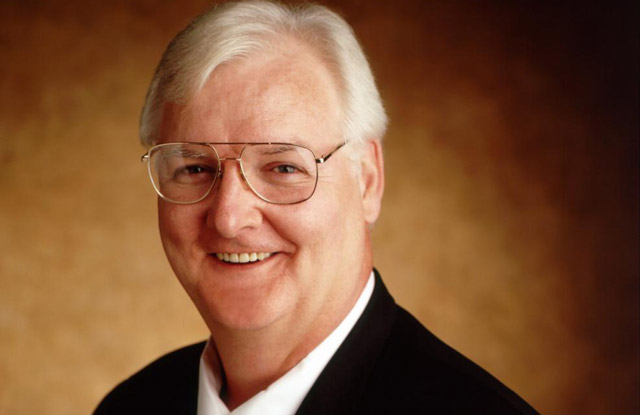 As long as you don’t think about it too hard, today’s entertainment is great.
As long as you don’t think about it too hard, today’s entertainment is great.
Think just a little and it’s actually amazing — you can watch it in a theatre; on your television set (old-fashioned pay TV or “over the top” on the Internet); and on your computer, tablet and smartphone, and probably soon on your wearable.
Think about it really hard and you realise why someone like Clyde Smith, senior vice-president of new technologies for network engineering and operations at Fox, straddles both Hollywood and Silicon Valley out of necessity.
Years ago, Smith said: “If you can’t identify it, you can’t operationalise or measure it; if you can’t measure it, you can’t monetise it.”
That’s what Old Hollywood and the new breed — the New Hollywood, let’s call it — both want: to make money.
Even though Smith is involved with the Society of Motion Picture and Television Engineers/Hollywood Post Alliance (SMPTE/HPA), he also took more than a passing interest in the recent Vanity Fair New Establishment Summit, the emerging entertainment event.
Heck, he even associates with New Establishment people at companies such as YouTube, Yahoo Video, Huffington Post, AOL Video and Netflix.
A lot of his Hollywood contemporaries make no bones about being at war with tech folks. After all, their content is being stolen and parsed out, and they’re forcing a change in the distribution/monetisation landscape they aren’t comfortable with.
What the new kids don’t understand or acknowledge is that SMPTE/HPA has a 100-year track record of establishing the standards that let us enjoy our content on any device, anytime and anywhere we want today.
“Maybe we didn’t know it at the time, but the industry made it possible for the technology industry and the kids to make ‘our’ art form available to the masses,” Smith said.
“They’ve opened the creative floodgate to a whole new breed of content creators with inexpensive cameras/ingest devices; compact/affordable production/post-production systems and editing/authoring/FX/post tools. Now, we’re all adding features, capabilities that are making video content the worldwide standard for communications, entertainment [and] enlightenment.”
At about 1,95m tall and smart to boot, not many people disagree with Smith.
What we’re seeing in both Hollywood and Silicon Valley is that the novelty of streaming cat videos no longer holds the eyeballs on any screen. Viewers’ expectations have shot up.
The big question in both places is how much content (how big/deep/rich) is too much?
The biggest discussion continues to be about 4K-resolution becoming a reality and the open-ended question as to whether people really perceive enough of a difference in pixel count between 2K, 4K, 8K and beyond or the differences in content shot and shown at 24fps, 48fps, 60fps and 120fps.
New technology standards like H.265 make it easier to stream 4K content over the Internet to today’s UHD TV channels such as UltraFlix on the newest sets and people say they can see the difference.
But there is a question of true quality perception when that content is streamed to a mobile device.
Mobile content offers a fresh set of revenue streams for content owners but already 3G networks can’t keep up and 4G/LTE is still a work in progress. And carriers haven’t really said what the streamed content will cost the consumer.
The Internet population of about 3bn has changed the media industry and a whole new breed of independent film, video and content producers has emerged. The old guard is taking notice.
The industries are exploring the impact of enriched image/sound technology, even though time and money are at a premium for the budget-constrained post-production world.
About five years ago, I heard a Hollywood executive say that film was still the basic form of entertainment capture/distribution and that it would probably continue to be through our lifetimes.
Today, it’s almost insignificant.
We’ve gone through an era of rapid change and now we’re trying to figure out how to optimise this for content producers, distributors and consumers.
The new media isn’t created in a backlot somewhere; it’s done in makeshift garage studios or more often on site.

The cost of entry into the media and entertainment industry has fallen dramatically for the new creative breed. New solutions are more feature-rich and easy to use. All it takes now is a desire, a good idea, a good script, good authoring/editing, a good soundtrack, good action, good channel(s) of distribution and a good audience.
This New Establishment won’t kill the Hollywood you grew up with and knew as a kid because, whether they like it or not, the two sides need each other and can learn from each other.
DreamWorks Animation and Disney have major YouTube channels and producers. CBS and HBO are setting up streaming over-the-top channels. Facebook, Alibaba, Netflix, NanoTech and Yahoo are striking up new and different content licensing models.
Digital content creation, distribution and reception are changing dramatically and are opening up new – and different – opportunities for everyone in the food chain.
As Fox’s Smith said, everyone involved needs to work together to operationalise, measure and monetise content production.
Who knows, this collaboration could just lead to a major source of revenue for a new/changed industry.
- Andy Marken is head of Marken Communications, a US consultancy




